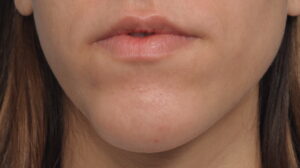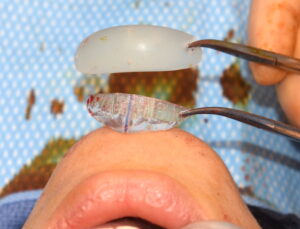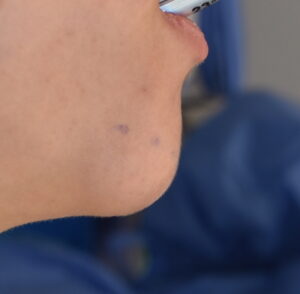Background: Chin implants are a relatively straightforward procedure in terms of surgical placement. But that does not mean it always achieves a satisfactory aesthetic outcome. There are many variables in trying to achieve an aesthetic outcome in each patient that should be considered. This include the natural shape of the chin, whether it is a male or female as well as a clear understanding of the patient’s outcome objectives. In the end these can be simplified into what are the specific three dimensional aesthetic needs does the patient need? As a solitary projecting structure one needs to think in 3D for any type of chin change.
In females the most common aesthetic errors in chin implants are the following; too large of an implant, an implant that is too wide and an implant that sits too low on the chin. All of these female chin implant errors are avoidable if preoperative computer imaging was done in all three facial views. Too often either no preoperative imaging as done or the imaging was done only in the profile view.
But even preoperative imaging can not always avoid the chin implant that sits too low. This is an intraoperative placement issue. When a chin is horizontally short it is important to recognize what the bony profile and length of the chin is. Some shorter chins may have a bony profile that is sloped backwards and is already on the edge off being too long. Putting an implant on the chin with this shape in the traditional location (at the bottom) will result in not a true horizontal augmentation effect but a near 45 degree effect. This will make the chin too vertically long as well as lose some horizontal augmentation. For a female a chin that is too long is just as aesthetically unacceptable as one that protrudes too far forward.
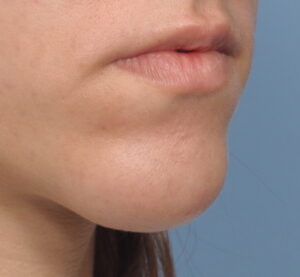
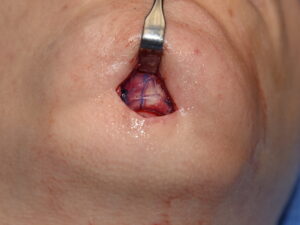
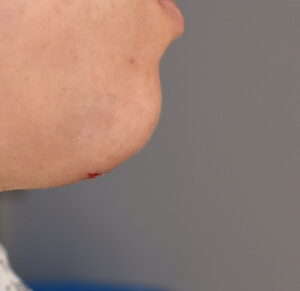
Like any facial implant when you know what doesn’t work it guides one to what will work better. In this case a chin with less projection (her request), the need for shorter wings with smoother edging and placement in a higher position on the bine was needed. The prior chin implant provided such guidance. It also illustrates that in cases of lower facial asymmetry this is another factor that must be taken into consideration as the more prominent the chin becomes (with a symmetric implant) the more noticeable this asymmetry can become.
Case Highlights:
1) A low positioned chin implant in a moderately recessed long chin will make the chin even longer.
2) One must be very vigilant in female chin implant augmentations of making the chin wide.
3) Chin implants placed above the periosteum can result in implant edge show.
4) In female chin implant replacements that exhibit all of the three adverse implant feature listed above must take those into consideration in designing and placing the new chin implant.
Dr. Barry Eppley
Indianapolis, Indiana



